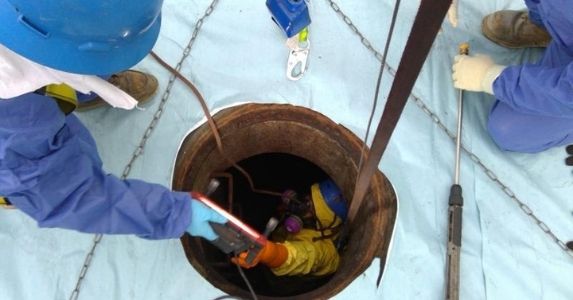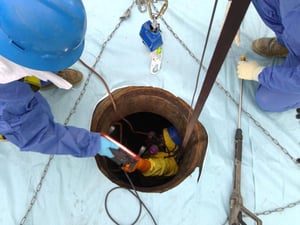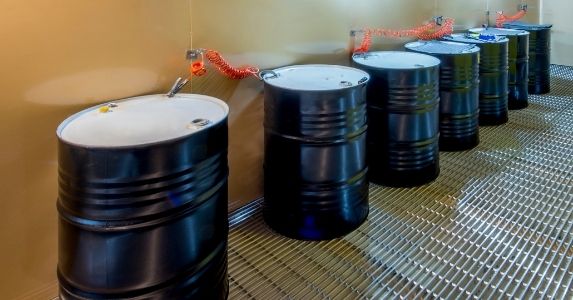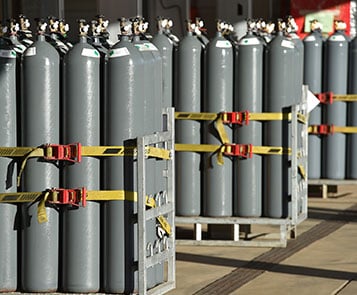Confined Space Entry FAQs by Facilities Managers
Facilities with permit-required confined spaces must meet the requirements established by either Federal or State safety regulations. Some of the requirements from these regulations include having a written confined space entry program, assigning attendant(s), providing confined space training, and ensuring a rescue plan is in place prior to entry. Here are some frequently asked questions about confined space entry.
What is a confined space by OSHA standards?
By OSHA standards, a confined space is:
- Large enough for an employee to fully enter and perform assigned duties
- Not made for continuous occupancy by an employee
- Limited or restricted in means of entry and exit
Some examples are tanks, silos, underground vaults, etc.
What is a permit-required confined space?
OSHA requires a confined space permit if a confined space has one or more of these characteristics:
- It contains a material that has the ability to engulf someone who enters the space
- It has an internal configuration that could cause an entrant to be trapped or asphyxiated
- It contains any other recognized serious safety or health hazards
- It contains or has the potential to contain a hazardous atmosphere
What are confined space regulations?
OSHA's standard for confined space regulations (29 CFR 1910.146) states;
- The employer shall evaluate the workplace to determine if any spaces are permit-required confined spaces.
- If the workplace contains permit spaces, the employer shall inform exposed employees, by posting danger signs or by any other equally effective means, of the existence and location of and the danger posed by the permit spaces.
- If the employer decides that its employees will enter permit spaces, the employer shall develop and implement a written permit space program. The written program shall be available for inspection by employees and their authorized representatives.
- If employees are not permitted to enter permit spaces, employers must take effective measures to prevent them from entering these spaces.
What is confined space training?
Confined space training instructs you on following OSHA standards and procedures to protect yourself, your coworkers, and your community while working in a confined space environment. These standards are meant to help prevent injury, illness, or death caused by confined space hazards. Upon completion of compliant confined space entry training, you'll be confined space-certified.
How long does confined space certification last?
OSHA does have two annual requirements associated with confined spaces: employers are required to review the permit program annually, and confined space rescue personnel are required to perform practice rescues at least once every 12 months. Industry leaders recommend completing confined space training every year or every two years.OSHA specifies that training should be given to affected employees:
- Before the start of the employee’s relevant duties
- Before relevant duties are changed
- Anytime there is a hazard presented by a change in operations not covered during previous training
What are the hazards associated with confined spaces?
The hazards associated with confined spaces can include:
- Toxic Atmosphere– A toxic atmosphere may be caused by the presence of hazardous substances that were originally contained in the space, byproducts of decomposing materials, or are introduced by foreign sources.
- Oxygen Deficiency – Oxygen may be displaced by other gases or used up by certain work processes such as welding. Atmospheres with oxygen levels below 19.5% can impair workers' ability think, breathe, and escape.
- Oxygen Enrichment – Too much oxygen, above 23.5%, can increase the risk of fires or explosions in the presence of combustible materials.
- Flammable or Explosive Atmospheres – There is a risk of fire or explosion due to the accumulated gases or vapors inside of a confined space which can ignite if the concentration exceeds the Lower Explosive Limit of a flammable substance in the atmosphere.
- Flowing Liquid or Free-Flowing Solids - Substances can flow into the confined space which can lead to drowning, asphyxiation, burns, and other injuries.
- Excessive Heat – Depending on their configuration, the environment, and the type of work being performed, confined spaces can increase the risk of heatstroke or collapse from heat stress.
- Venomous Pests – Some animals or insects tend to seek out areas similar to those typically found in confined spaces.
If you are looking for more information on confined space entry or confined space training, our environmental health and safety team at Triumvirate is here to help. Our specialists will work with you to develop a plan that meets your business’s needs.







